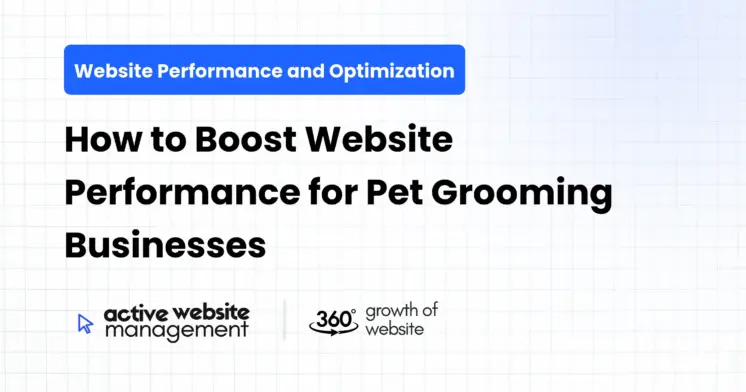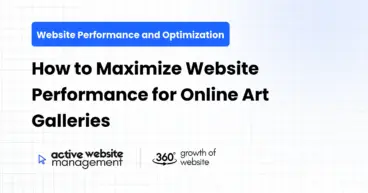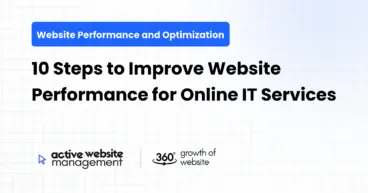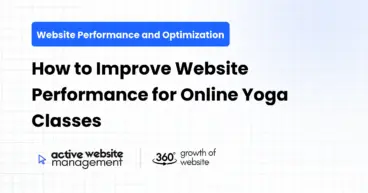February 4, 2025
13 min read
Understanding the Importance of Website Performance for Pet Grooming
Why Website Speed Matters to Pet Parents
In today’s fast-paced digital world, pet parents expect instant gratification. They want to find the perfect groomer for their furry friends quickly and easily. A slow-loading website can be a major turnoff, leading to lost customers and a damaged reputation. Think of it like this: would you wait in a long line at a physical grooming salon when there’s another one right next door with no wait? The same principle applies online. Every second counts! Pet owners are searching for convenience, and a speedy website delivers just that.
- First Impressions: Your website is often the first interaction potential clients have with your business. Make it count!
- Patience is Thin: People have short attention spans online. They’ll bounce if your site doesn’t load fast.
- Mobile Matters: Many pet parents search for groomers on their phones. Mobile optimization and speed are critical.
The Connection Between Website Speed and SEO for Pet Grooming
Google prioritizes fast-loading websites in its search rankings. A slow website can negatively impact your search engine optimization (SEO) efforts, making it harder for potential customers to find you. It’s like trying to win a race with a flat tire. You might have a great service, but no one will find you if you’re stuck at the starting line. Improving your website speed is not just about user experience; it’s about boosting your visibility and attracting more clients.
- Google’s Algorithm: Speed is a ranking factor.
- Higher Rankings: Faster sites rank higher in search results.
- More Visibility: Better SEO means more people find your grooming business.
The Impact on Conversions: From Browsing to Booking
A fast and user-friendly website encourages visitors to take action, whether it’s booking an appointment, filling out a contact form, or purchasing pet care products. Imagine a potential customer landing on your site, instantly impressed by the sleek design and quick loading times. They’re more likely to explore your services, check out your gallery of adorable groomed pets, and ultimately, schedule an appointment. A slow website, on the other hand, can lead to frustration and lost opportunities.
- Seamless Booking: A fast site makes booking appointments easy.
- Increased Engagement: Visitors are more likely to explore your services.
- Higher Conversion Rates: More bookings and sales.
Don’t Just Maintain Your Website—
Grow It using Active Website Management! Don't Wait for Growth—Accelerate It with Active Website Management
Diagnosing Website Performance Issues for Pet Grooming Websites
Using Google PageSpeed Insights
Google PageSpeed Insights is a free and powerful tool that analyzes your website’s speed and provides actionable recommendations for improvement. It’s like having a personal website performance consultant. Simply enter your website’s URL, and the tool will generate a report highlighting areas where your site excels and areas that need attention. Pay close attention to the “Opportunities” and “Diagnostics” sections to identify specific issues that are slowing down your site.
- Free and Accessible: Easy to use, no cost involved.
- Detailed Analysis: Identifies specific speed bottlenecks.
- Actionable Recommendations: Provides clear steps for improvement.
Leveraging GTmetrix for In-Depth Analysis
GTmetrix is another popular website speed testing tool that offers a more in-depth analysis than Google PageSpeed Insights. It provides a waterfall chart that shows the loading time of each individual element on your page, allowing you to pinpoint the exact causes of slowdowns. Think of it as a forensic investigation of your website’s performance. This level of detail can be invaluable for identifying and addressing complex performance issues.
- Waterfall Chart: Visualize the loading sequence of each element.
- Detailed Metrics: Provides a comprehensive overview of performance.
- Advanced Analysis: Helps identify complex issues.
Common Culprits: Identifying Website Slowdowns
Several common factors can contribute to a slow-loading website. These include:
- Large Images: High-resolution images that haven’t been optimized can significantly increase page load times.
- Unoptimized Code: Bulky or poorly written code can slow down your site’s performance.
- Too Many Plugins: Excessive plugins can add unnecessary weight to your website.
- Slow Hosting: A low-quality hosting provider can lead to slow server response times.
- Lack of Caching: Without caching, your website has to reload all resources every time someone visits, slowing things down.
- Unnecessary Redirects: Too many redirects add extra steps to the loading process.
Optimizing Images for Pet Grooming Websites
The Power of Image Compression: Reducing File Size Without Sacrificing Quality
Large, unoptimized images are a major culprit behind slow-loading websites. Image compression reduces the file size of your images without significantly sacrificing visual quality. It’s like shrinking a bulky suitcase to fit in the overhead compartment – you’re making it more manageable without getting rid of the essentials. There are numerous online tools and software programs that can help you compress your images.
- Reduced Load Times: Smaller images load faster.
- Improved User Experience: Visitors enjoy a smoother browsing experience.
- Better SEO: Faster loading times improve search engine rankings.
Choosing the Right Image Format: JPEG, PNG, or WebP?
Choosing the right image format is crucial for balancing image quality and file size.
- JPEG: Best for photographs and images with lots of colors. Offers good compression but can result in some loss of quality.
- PNG: Best for images with text, logos, and graphics that require transparency. Offers lossless compression, meaning no quality is lost, but file sizes can be larger.
- WebP: A modern image format developed by Google that offers superior compression and quality compared to JPEG and PNG. It’s the ideal choice for most website images.
Think of it like choosing the right tool for the job. A hammer is great for nails, but you wouldn’t use it to screw in a screw.
Implementing Lazy Loading: Prioritizing Above-the-Fold Content
Lazy loading is a technique that delays the loading of images and other resources until they are actually needed, i.e., when they are about to come into the viewport. This means that only the images that are visible on the screen when the page first loads are loaded initially. This significantly reduces the initial page load time and improves the user experience. Imagine a restaurant that only brings out the dishes as you’re ready to eat them, rather than piling everything on the table at once.
- Faster Initial Load Time: Prioritizes content users see first.
- Reduced Bandwidth Usage: Saves bandwidth by only loading images as needed.
- Improved User Experience: Creates a smoother and more responsive browsing experience.
Optimizing Code for Pet Grooming Websites
Don't Wait for Growth—Accelerate It with
Active Website Management Don't Wait for Growth—Accelerate It with Active Website Management
Minifying HTML, CSS, and JavaScript: Reducing File Sizes
Minification removes unnecessary characters from your code, such as spaces, comments, and line breaks, without affecting its functionality. This reduces the file size of your code, making it load faster. Think of it as streamlining a recipe by removing unnecessary instructions – the dish still turns out the same, but the recipe is shorter and easier to follow. There are many online tools and plugins that can automatically minify your code.
- Smaller File Sizes: Faster loading times.
- Improved Efficiency: Streamlined code.
- Better Performance: Overall website speed improvement.
Leveraging Browser Caching: Storing Website Data Locally
Browser caching allows visitors’ browsers to store static files from your website, such as images, CSS, and JavaScript, locally on their computers. This means that the next time they visit your site, their browser can load these files from their local cache instead of downloading them again from your server. It’s like having a shortcut to your favorite pet store – you can get there much faster because you already know the way.
- Faster Load Times for Returning Visitors: Improves the experience for repeat customers.
- Reduced Server Load: Decreases the burden on your server.
- Improved Website Performance: Overall speed boost.
Eliminating Render-Blocking Resources: Prioritizing Critical Content
Render-blocking resources are files that prevent the browser from rendering the page until they are fully loaded. These resources can significantly delay the initial display of your website, leading to a poor user experience. Identifying and eliminating or deferring render-blocking resources is crucial for optimizing website speed.
- Faster Initial Display: Users see content sooner.
- Improved User Experience: Creates a more responsive and engaging experience.
- Better Perceived Performance: Makes the site feel faster, even if the total load time is the same.
Optimizing Your Pet Grooming Service Platform
Choosing the Right Content Management System (CMS)
The CMS you choose can have a significant impact on your website’s performance. Some CMS platforms are more lightweight and optimized for speed than others. WordPress is a popular choice, but it can become bloated with plugins and themes if not properly managed. Consider exploring alternative CMS platforms that are specifically designed for speed and performance.
- WordPress: Popular and versatile, but requires careful optimization.
- Alternative CMS Options: Explore options like static site generators for maximum speed.
- Consider Your Needs: Choose a CMS that meets your requirements without adding unnecessary overhead.
Optimizing Your Theme or Template
Your website’s theme or template can also significantly impact its performance. Choose a lightweight and well-optimized theme that doesn’t include unnecessary features or code. Avoid themes that are packed with complex animations and graphics, as these can slow down your site.
- Lightweight Themes: Prioritize speed and efficiency.
- Avoid Bloat: Choose a theme that only includes the features you need.
- Mobile-Friendly Design: Ensure your theme is responsive and optimized for mobile devices.
Plugin Management: Keeping Things Lean and Efficient
Plugins can add functionality to your website, but they can also slow it down if not managed properly. Only install plugins that you absolutely need, and make sure to keep them updated. Regularly review your plugins and remove any that are no longer in use.
- Install Only Necessary Plugins: Avoid unnecessary bloat.
- Keep Plugins Updated: Ensure compatibility and security.
- Regular Plugin Audits: Remove unused or outdated plugins.
Selecting the Right Hosting Provider for Your Pet Grooming Business
The Importance of a Reliable Hosting Provider
Your hosting provider plays a crucial role in your website’s performance. A low-quality hosting provider can lead to slow server response times, frequent downtime, and security vulnerabilities. Choose a hosting provider that offers reliable performance, excellent customer support, and robust security features.
- Server Response Time: A fast server is essential for a fast website.
- Uptime Guarantee: Ensure your website is always accessible to customers.
- Customer Support: Choose a provider that offers responsive and helpful support.
Understanding Different Hosting Options: Shared, VPS, or Dedicated Server
There are several different types of hosting options available, each with its own advantages and disadvantages:
- Shared Hosting: The most affordable option, but your website shares resources with other websites on the same server.
- VPS Hosting: A virtual private server provides more resources and control than shared hosting, but it’s also more expensive.
- Dedicated Server: The most expensive option, but it provides the most resources and control.
Consider your website’s traffic and resource needs when choosing a hosting option. For most pet grooming businesses, VPS hosting is a good balance of performance and cost.
Content Delivery Networks (CDNs): Distributing Your Content Globally
A CDN is a network of servers located around the world that cache your website’s content and deliver it to visitors from the server that is closest to them. This can significantly improve website speed, especially for visitors who are located far away from your main server.
- Faster Load Times for Global Visitors: Improves the experience for customers worldwide.
- Reduced Server Load: Decreases the burden on your server.
- Improved Website Performance: Overall speed boost.
Regular Website Maintenance and Monitoring for Sustained Performance
The Importance of Continuous Monitoring
Website performance is not a one-time fix; it requires ongoing monitoring and maintenance. Regularly monitor your website’s speed and performance to identify and address any issues that may arise.
- Identify and Address Issues Quickly: Prevent performance problems from impacting your business.
- Track Performance Over Time: Monitor the effectiveness of your optimization efforts.
- Ensure Consistent Performance: Maintain a fast and reliable website.
Setting Up Performance Alerts
Set up performance alerts to notify you when your website’s speed or uptime drops below a certain threshold. This will allow you to quickly identify and address any issues before they impact your customers.
- Proactive Issue Detection: Identify problems before they escalate.
- Faster Response Times: Resolve issues quickly and efficiently.
- Minimize Downtime: Keep your website online and accessible.
Active Website Management: A Partner in Your Success
Active Website Management offers comprehensive website management services, including performance optimization, security monitoring, and content updates. Let Active Website Management handle the technical aspects of your website so you can focus on running your pet grooming business.
- Expert Website Management: Benefit from the expertise of experienced professionals.
- Comprehensive Services: Get everything you need to keep your website running smoothly.
- Peace of Mind: Focus on your business knowing your website is in good hands.
Regularly Updating Your Website Content
Keeping your website content fresh and updated is important for both SEO and user engagement. Regularly update your website with new blog posts, photos, and videos to keep your visitors coming back for more. Fresh content also signals to search engines that your website is active and relevant, which can improve your search rankings.
- Improved SEO: Fresh content boosts your search rankings.
- Increased User Engagement: Keep visitors coming back for more.
- Showcase Your Expertise: Share valuable information about pet grooming.
Measuring the Results of Your Website Performance Optimization Efforts
Tracking Key Performance Indicators (KPIs)
Measuring the results of your website performance optimization efforts is crucial for determining whether your efforts are paying off. Track key performance indicators (KPIs) such as:
- Page Load Time: The time it takes for your pages to load.
- Bounce Rate: The percentage of visitors who leave your website after viewing only one page.
- Conversion Rate: The percentage of visitors who complete a desired action, such as booking an appointment.
- Search Engine Rankings: Your website’s position in search engine results pages (SERPs).
Using Analytics Tools to Monitor Progress
Use analytics tools such as Google Analytics to monitor your website’s performance and track your KPIs. This will provide you with valuable insights into how your website is performing and help you identify areas for further improvement.
- Google Analytics: A free and powerful tool for tracking website performance.
- Customizable Reports: Create reports that focus on the KPIs that are most important to your business.
- Data-Driven Decision Making: Use data to inform your website optimization efforts.
A/B Testing for Continuous Improvement
A/B testing is a technique for comparing two versions of a webpage to see which one performs better. This can be a valuable tool for optimizing your website for conversions. For example, you could test different headlines, calls to action, or image layouts to see which ones generate the most bookings.
- Data-Driven Optimization: Make informed decisions based on real user behavior.
- Improved Conversion Rates: Increase the percentage of visitors who book appointments.
- Continuous Improvement: Constantly refine your website to maximize its performance.
By implementing these strategies, you can significantly boost your website’s performance and attract more pet parents to your grooming business. Remember, a fast and user-friendly website is essential for success in today’s competitive online landscape.







